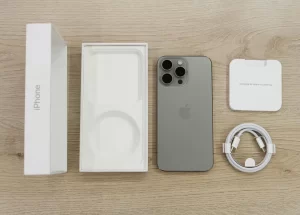Contents
ToggleUsing Search Engine Optimization to Drive Traffic and Revenue to Your Blog
A blog is not just a collection of opinions and thoughts but also an arrow in your SEO quiver capable of increasing traffic & revenue if used correctly with proper discipline. Search Engine Optimization (SEO) is very important for your blog to get found by the right audience – like you on Google. In this detailed guide, you will learn how to use SEO tricks effectively to improve your blog visibility thus increasing the number of website visitors and earnings.
Understanding SEO Basics
What is SEO-but tapping into that practice of optimizing your website or blog better so it ranks higher on search engine results pages (SERPs) for the keywords and phrases you’re targeting? When executed properly, SEO will not only drive more organic (non-paid) traffic to your blog but also build its perceived authority and credibility for both users and search engines.
Essential Parts of SEO on the Blog
1. SEO Keywords: First, find keywords and phrases that your target audience will most likely use to search for information related to your blog. Use tools such as Google Keyword Planner or SEMrush to find high-volume keywords with low competition.
2. Optimization: Once you know what your keywords are, make sure to include them in the text of your blog posts. Try and use keywords in your title tag, meta description, and headings (H1, H2, etc.) as well as through the article in a natural way. Just ensure not to overdo it, as too many keywords can hurt readability and SEO.
3. From -Quality content creation- Quality and engaging content are the most important factors to being successful in SEO. Produce posts on your site that give workable data for responses to questions or even difficulties that the people who are reading through your blog love. Longer, more in-depth articles (1500+ words), usually rank higher on search engines. aiming for high-quality and long-form content that is well-researched results in better rankings as a result of high intent keyword targeting.
4. On-Page SEO: Optimize different on-page elements such as the internal link, image alt text, and URL structure. Internal linking assists search engines in mapping your site structure, as well as easy user navigation; descriptive image alt text is good for both accessibility and has a chance of ranking in the fabled Google Image results.
5. TECHNICAL SEO: Check to see if your blog is technically correct by working on the page speed, and mobile friendliness along with fixing any broken pages or errors. Since search engines value websites with flawless user experience the most, these technical aspects are very important for scoring high on SEO.
Traffic Driving + Revenue Generating Strategies
Good SEO is not just getting ranked in Google but converting that traffic into dollars. Here are a few tips for you to optimally utilize traffic as well as sales from your blog:
1. Monetization Methods
Advertising: display ads through Google AdSense (or any other ad networks). Intelligently position advertisements in your articles such that it does not affect the user experience.
Affiliate Marketing: Promote other companies through your website using affiliate links to the products or services relevant to the topic of the blog. Get them here and earn commissions when your audience makes a purchase.
– Sponsored Posts: Create sponsored content with brands or companies Make sure it is a sponsored post within the interest of your readers and always be transparent.
2. Email Marketing
– Email List: Collecting the emails of blog visitors. Provide an incentive for signing up like a free eBook, special content, or discount
Foster Subscribers: Send consistent content in newsletters, blogging notices, and deals Segment to customize what you send people by their interests
3. Social Media Promotion
– Promote Blog Posts: Share your blog content to social media outlets like Facebook, Twitter, LinkedIn and Instagram. Make sure you use engaging visuals, attention-grabbing headlines, and hashtags that correlate to your content so when they promote it for their audience stuns opt-in.
– Interact with people that use Instagram: Interacting helps to create custom interactions, and respond to comments and the more powerful you make your sharing of publications may reach new visitors.
4. Analytics and Optimization
Check Performance: Monitor your blog, traffic sources, and conversion rate with the Google Analytics tool. Learn what content is getting the most engagement and see if you can apply that to underperforming posts.
A/B Testing: Additionally, you can experiment with different headlines and calls to action (CTAs) call-to-actions as well as various layout variations to increase click-through rates and conversions.
Conclusion
A comprehensive SEO strategy that considers your audience can help generate blog traffic and contribute revenue. When you have better SEO, which this tool helps to do on your site with keyword research, content optimization, and technical, targeted blog visitors will visit through improved visibility. Monetization tactics also include advertising, affiliate marketing email marketing to convert that traffic into revenue. Always test SEO references to preserve competitiveness and become the best blog in this digital dimension.
For more similar info:
https://blog.hubspot.com › marketing › blog-search-engi…












